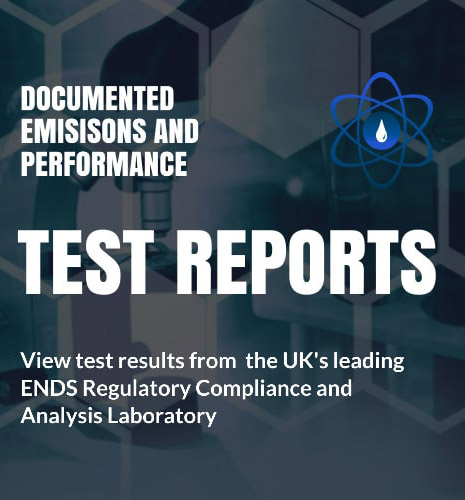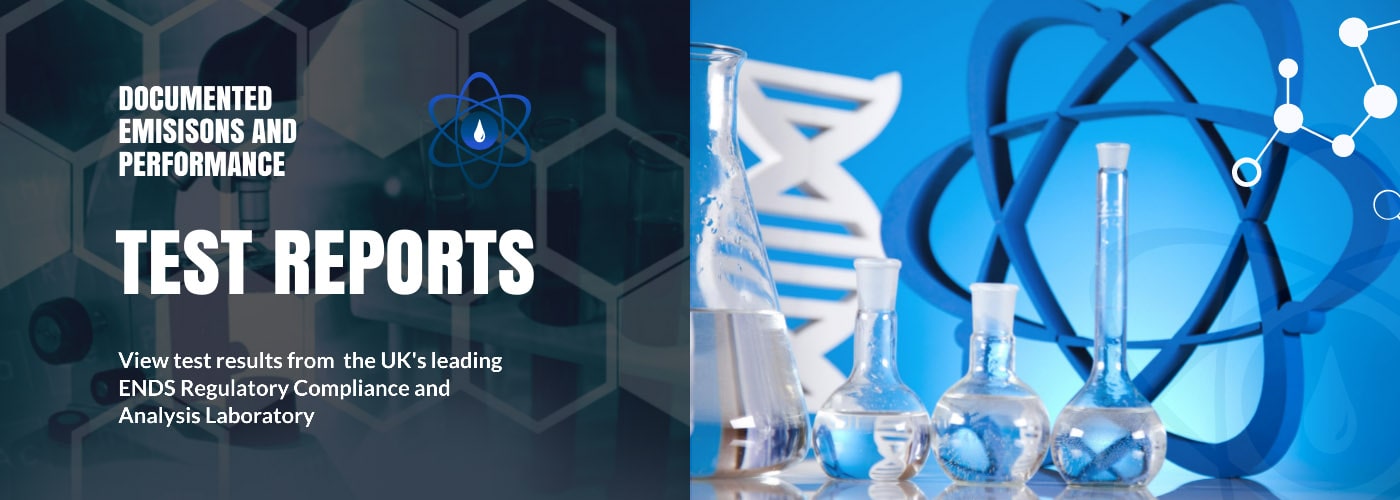

Evolv Reflex Laboratory Test Data
The following is an abbreviated version of part of Evolv’s PMTA filing and emissions test results comparing Reflex to combustible cigarettes.
Tested liquids
Evolv has analyzed the aerosol HPHC emissions of Reflex with four commercially available E-liquids. Three are common flavors and one is unflavored. It believes this is representative of the majority of users. The liquids analyzed range from 12mg/ml nicotine concentration to 24mg/ml nicotine concentration.
This testing was performed by Broughton Nicotine Services in the UK. The test topology was 8 puffs, followed by an 8 minute delay and another 8 puffs. 7 replicates of each liquid and setting were analyzed. The devices and cartridges were randomly selected from three production batches.
Clear is an unflavored liquid, and was therefore not analyzed for HPHCs associated with flavorings.
Evolv believes that this is a reasonable cross section of the types of flavors that the FDA could foreseeably determine to be APPH. Evolv is very dubious that flavors like Mountain Dew or Baby’s First Gummy Bear will be on the market when Reflex is granted a marketing authorization.

Median results at ISO conditions
Because Reflex is designed to yield and respond like a cigarette, and is targeted at current and former smokers, users use them in a clustered manner like a cigarette. A typical cigarette delivers approximately 8 puffs. Evolv considers 8 puffs on a Reflex to be one cigarette-equivalent. The following table is presented as the median value for each HPHC with each liquid for an 8 puff cluster. Many values are below the LOD for the method, which is reported here as BDL, or below the LOQ, which are shown in this table in blue. For all Reflex tests the green (middle) power setting was used.
Abbreviations used:
BDL “Below Detection Limit” means a value could not be detected below the tests limit.
LOD – “Limit Of Detection” means the lowest concentration or quantity of a component or substance that can be reliably distinguished with a specific analytical method.
LOQ – “Limit Of Quantification” means the lowest value that can be detected with accuracy and precision.
μg – microgram.
mg – milligram.
ug/cig – micrograms per 8 puffs / cigarette or device.
HPHC – “Harmful and Potentially Harmful Constituents” are chemicals or chemical compounds in tobacco products or tobacco smoke that cause or could cause harm to smokers or nonsmokers.
1R6F – A standard reference cigarette, used throughout the tobacco industry and academic laboratories as a consistent and uniform test item for inhalation toxicology research.
Median Results (Units/ 8 puffs)
Most HPHCs were undetectable. Certain flavorings or flavoring contaminants, such as Vanillin or Glycidol, were only observed with specific liquids and are understood to be components of that specific liquid formulation.
The compounds shown to be generated by the Reflex itself, albeit in very low doses, are metals and aldehydes. Aldehyde emissions, in comparison to combustible cigarettes, is presented below for light and intense puffing topologies.

Comparison to Cigarettes (ug/cig)
Reflex has extremely low HPHC emissions, compared to cigarettes and even compared to other vapor products.
Reflex’s HPHC generation in aerosol has been tested with a variety of liquids and puff topographies. This is true across a range puff topographies representative of real-world use, even when driven up to the limits of its built-in coil temperature limiting system.
Reflex’s development included over 2000 hours of computational fluid dynamics simulation, to ensure that the flow over the coil would remain stable and uniform, not just during standard laboratory conditions but also in real-world use. This prevents hotspots or low flow sections of the coil or aerosol path. Evolv believes that this attention to detail is why Reflex’s HPHC emissions are so low.


